Owls are some of the most stunning birds of prey in the world, powerful predators with graceful flight and a piercing gaze. There are approximately 250 species of owls in the world today, 19 of which inhabit the United States. But what about Maryland? Which owls might you see there? Well, there are actually eight species in the state, ranging from year-round inhabitants to rarely-seen migrants. Keep reading to discover the owls in Maryland and where you might see them!
1. Long-Eared Owl

Long-eared owls can be identified by their long ear tufts.
©Romuald Cisakowski/Shutterstock.com
The first owl on the list, and the rarest in the state, is the long-eared owl. Long-eared owls used to nest in Maryland but can now only be observed in the state occasionally during their migration. Long-eared owls are named for their distinctive ear tufts which are significantly longer than many of the other owls that also possess them. They are typically light brown with dark brown markings and a wingspan of around three feet. Long-eared owls typically live in woodlands or other areas where there is plenty of cover. They are nocturnal owls and prey on a range of mammals and small birds.
2. Snowy Owl

Snowy owls are rare winter visitors to Maryland.
©Jim Cumming/Shutterstock.com
Another rare owl in Maryland is the beautiful snowy owl, which occasionally visits the state during the winter months. Snowy owls are native to the Arctic tundra, which is their breeding ground. However, they often migrate south to warmer areas during the winter. When they do visit Maryland, snowy owls can be found in open areas in grasslands and fields or close to coastlines. Snowy owls can be distinguished by their stunning white appearance, although they also have several black or dark brown markings on them. They are large owls with a length of up to 27 inches and a wingspan of four to five feet.
3. Northern Saw-Whet Owl
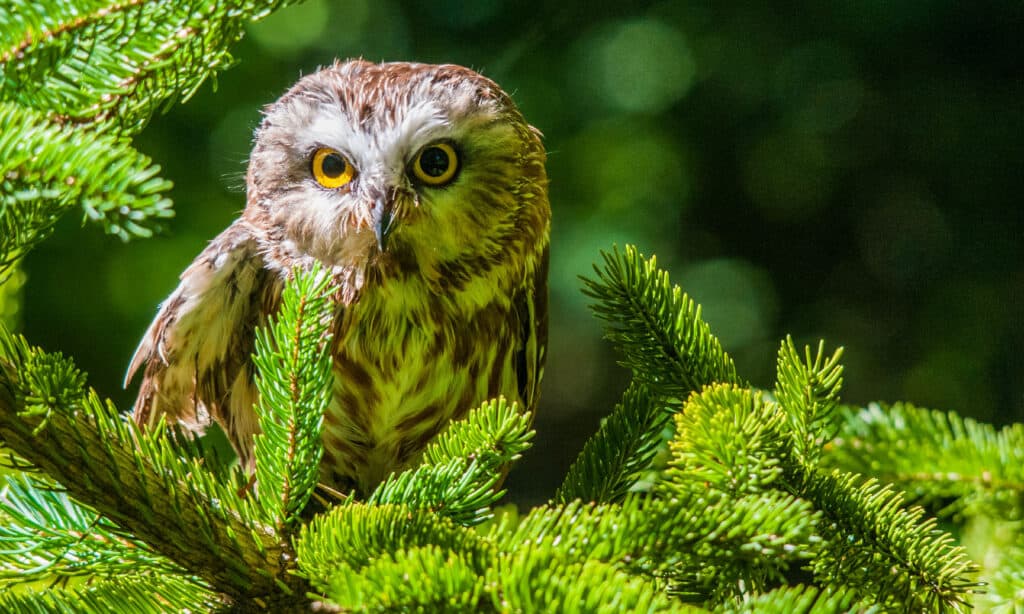
Northern saw-whet owls are small with a length of no more than nine inches.
©iStock.com/bookguy
The next owl is the northern saw-whet owl, which is another fairly rare one. Northern saw-whet owls only rarely inhabit Maryland as it is right at the southern part of their range. Northern saw-whet owls typically inhabit coniferous forests where they nest in tree cavities created by other birds, such as woodpeckers. They are small owls, with a wingspan of only 16 to 22 inches and a total body length of six to nine inches. Northern saw-whet owls are typically brown with lighter markings.
4. Short-Eared Owl
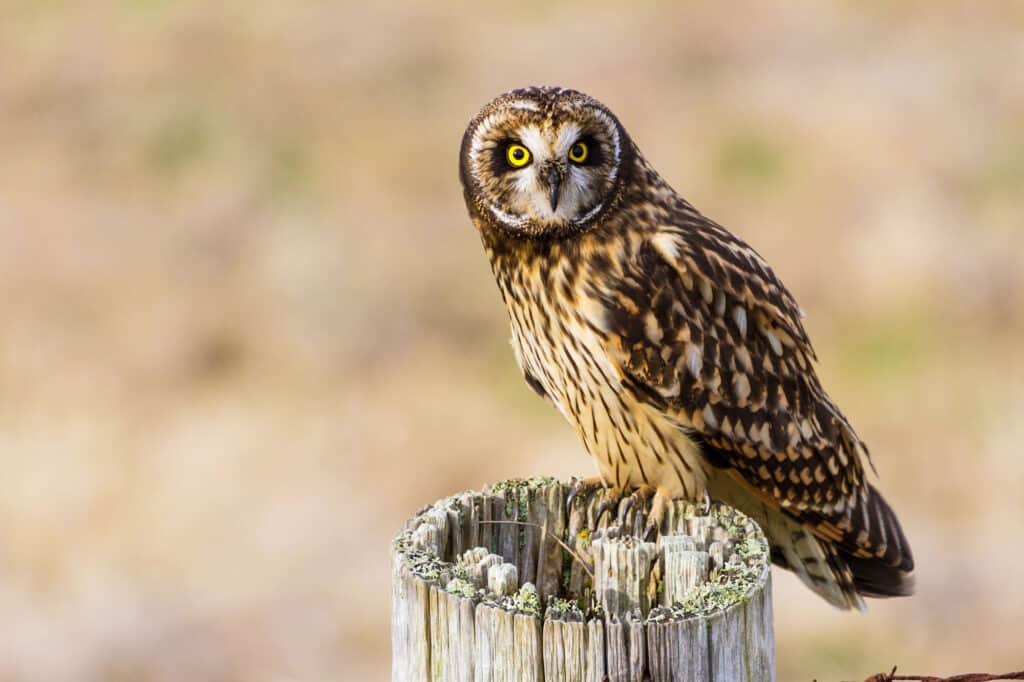
Short-eared owls are present in Maryland during the fall and winter.
©iStock.com/Devonyu
Another owl that is typically only present in the state during the fall and winter months of its migration is the short-eared owl. As their name suggests, short-eared owls have short ear tufts that are significantly smaller than those of the long-eared owl. Short-eared owls are brown with barred markings and lighter underparts. They have a wingspan of 33 to 43 inches and a body length of no more than 17 inches. Short-eared owls live in a variety of habitats, including grasslands, fields, and woodlands. However, they are often close to areas with plenty of rodents as they make up a large portion of their diet.
5. Barn Owl
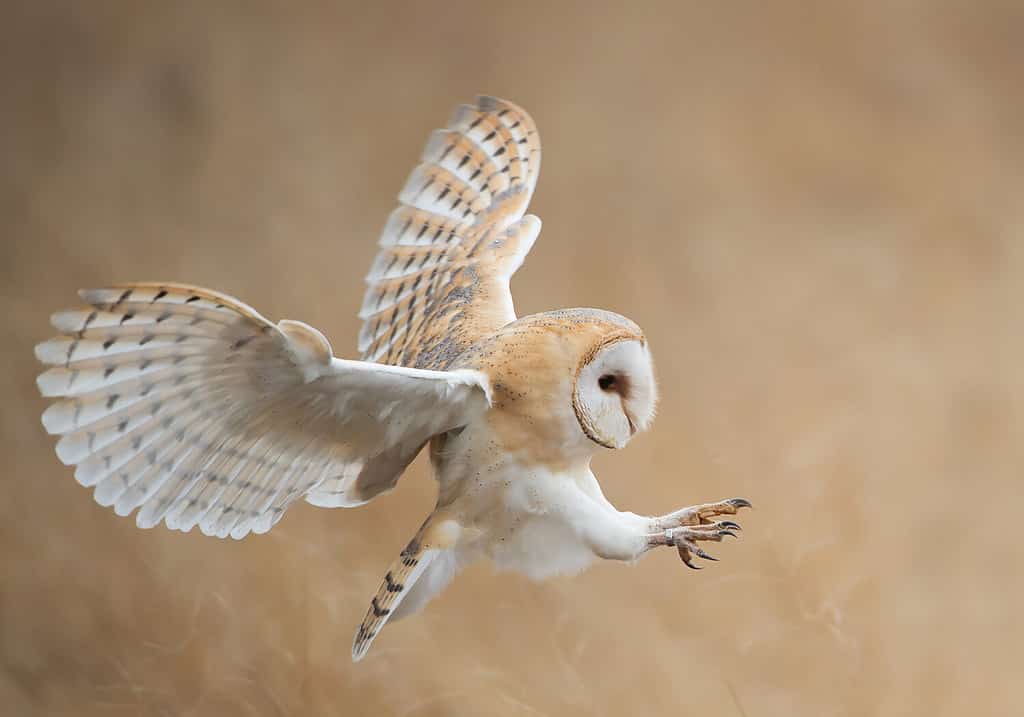
Barn owls are fairly widespread across Maryland.
©MZPHOTO.CZ/Shutterstock.com
One of the most iconic owls in the world is the buff-colored barn owl. Barn owls also have a distinctive heart-shaped face and lighter-colored underparts. They are large birds with a wingspan of between three and four feet. Barn owls inhabit grasslands, farms, and other rural areas where there is a suitable nesting area, such as a barn or old building. Barn owls are widespread across Maryland, although their population is declining, with habitat loss being one suggested reason.
6. Barred Owl

Barred owls have distinctive barred markings on their bodies.
©FotoRequest/Shutterstock.com
One of the most common owls in Maryland is the barred owl, which can be observed all year round in the state. Barred owls are typically found in forests and woodlands close to a source of water. They nest in tree cavities, often ones that have been abandoned by other animals. Barred owls are large owls and have a wingspan of up to 49 inches. They are brown and white, with distinctive bars on their plumage.
7. Eastern Screech Owl
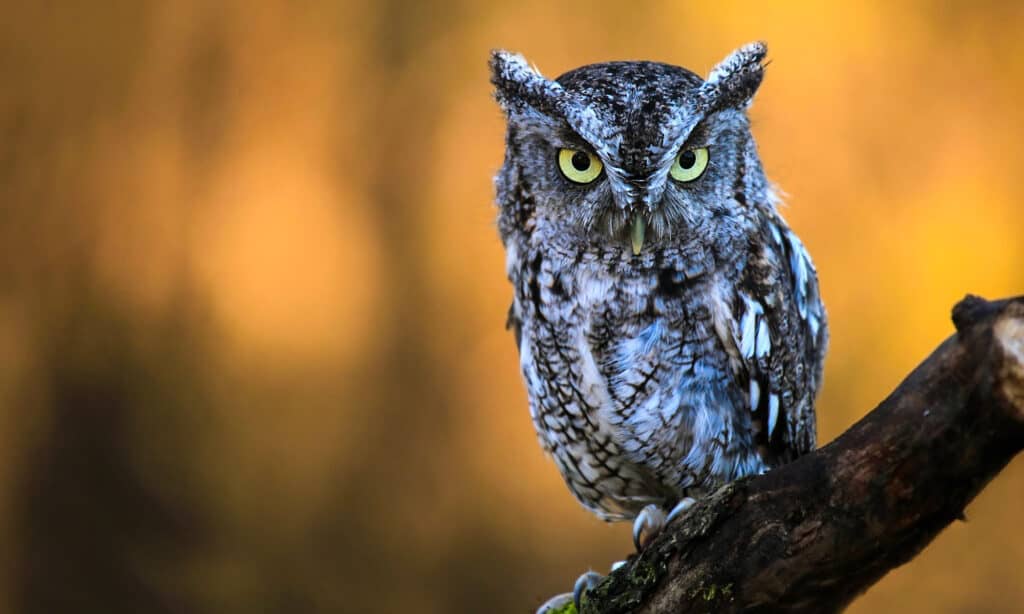
Eastern screech owls are one of the most common species of owl in Maryland.
©mlorenz/Shutterstock.com
Another common owl is the eastern screech owl, which lives statewide all year round. They live in a variety of habitats but are particularly common in residential areas and woodlands. They nest in tree cavities and are most active during the night. Eastern screech owls have a largely opportunistic diet, and they prey on a wide variety of birds, mammals, and reptiles. They are fairly small owls, with a wingspan of up to two feet and a body length of up to ten inches. They have gray or rust-colored bodies and distinctive ear tufts.
8. Great Horned Owl
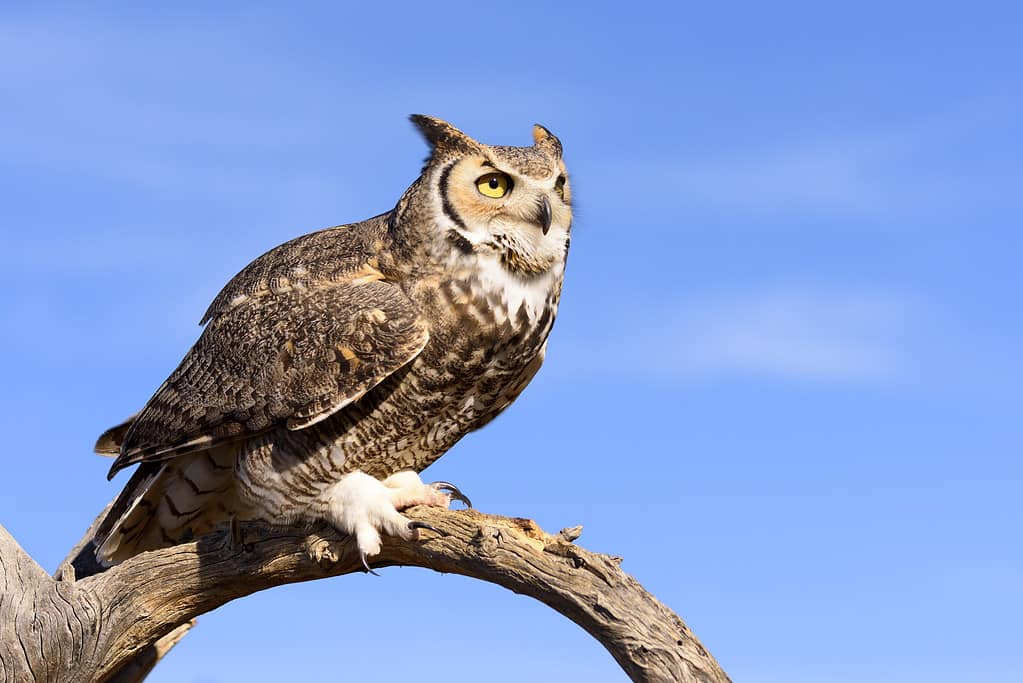
Great horned owls are large, powerful birds that are widespread across the state.
©kojihirano/iStock via Getty Images
The final owl on the list is the great horned owl, which inhabits Maryland all year round. Great horned owls live in a wide range of habitats, including forests, grasslands, and prairies. They nest in trees, but again, they do not create their own nests, preferring instead to use existing tree cavities or abandoned nests. Great horned owls are large birds, with a wingspan of approximately 4.6 feet. They are powerful predators and eat a variety of birds and mammals, which are typically caught during the night. Great horned owls have noticeable ear tufts and have mottled brown feathers with dark brown markings but a lighter-colored underside.
The photo featured at the top of this post is © Jim Cumming/Shutterstock.com
Thank you for reading! Have some feedback for us? Contact the AZ Animals editorial team.







